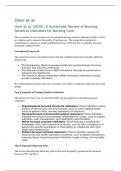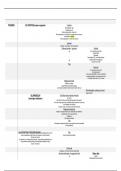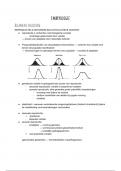Samenvatting
Summary Verplichte literatuur van diagnostiek te veel? Dit is alle literatuur samengevat
- Instelling
- Universiteit Gent (UGent)
Deze samenvatting omvat alle verplichte literatuur van het vak Diagnostiek in het schakelprogramma naar master in de verpleegkunde. 24 mei !!! kwam er nog een update van de literatuurlijst, deze samenvatting bevat alles dat op de finale readinglijst staat.
[Meer zien]







